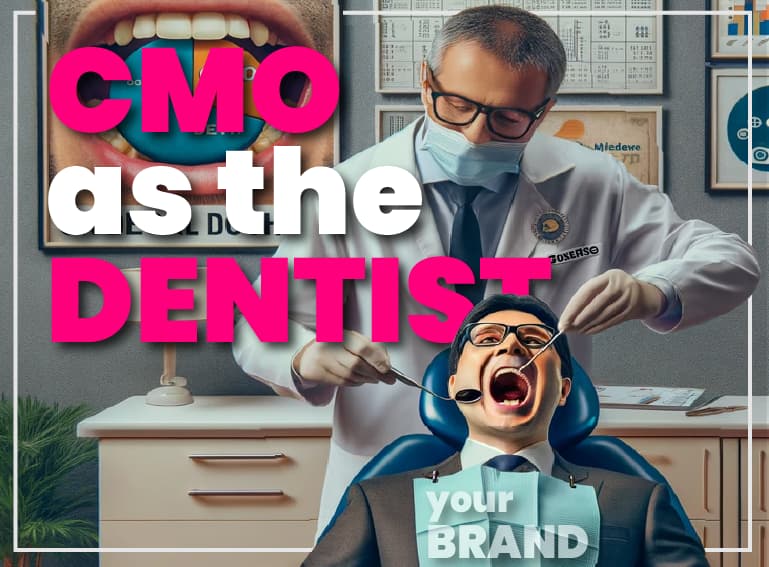
In the complex and ever-evolving world of business, assuming the role of a Chief Marketing Officer (CMO) is akin to that of a dental doctor in the corporate landscape. This comparison, while unconventional, sheds light on the multifaceted challenges and strategies necessary for a successful tenure as a CMO.
Particularly those experienced by the CEO and the marketing department.
The Diagnostic Stage: Understanding Pain Points The first step in this journey, much like in a dental clinic, is diagnosis. A new CMO must meticulously assess the company’s existing marketing strategies, akin to a dental examination, identifying areas of discomfort or inefficiency. This stage involves understanding not just the symptoms (marketing challenges) but also the underlying causes – be it market shifts, technological changes, or internal team dynamics. For instance, a CEO’s pain point might be the company’s declining market share, while the marketing team might struggle with outdated tools or unclear strategies.
Strategic Planning: Crafting a Treatment Plan Once the issues are diagnosed, strategic planning follows. This phase is analogous to a dentist devising a treatment plan; it requires a balance of innovative thinking and realistic goal-setting. The CMO must align new strategies with the company’s overarching goals, using advanced technologies and methodologies. This step often involves introducing new tools or platforms, much like how dentists employ new techniques and equipment to address dental issues.
Implementation and Management: Addressing the Pain As with dental treatments, the implementation of new marketing strategies can be met with apprehension and discomfort. It’s the CMO’s task to ensure that these changes are as painless as possible, providing clear communication and support to both the CEO and the marketing team. This involves managing evolving marketing tactics and technologies, continuously educating the team, and aligning them with the company’s vision.
Measurement and Adaptation: Follow-Up Care The role of a CMO doesn’t end with the implementation of strategies. Ongoing evaluation and adaptation are crucial, mirroring a dentist’s role in providing follow-up care. This means continuously measuring the outcomes of marketing initiatives and being ready to adapt strategies for better results. It’s about being proactive in identifying potential problems before they become major issues.
Empathy and Communication: Easing the Discomfort A significant part of a CMO’s role, much like a dental doctor’s, is to ease the discomfort associated with change and new strategies. This requires a high degree of empathy and excellent communication skills. The CMO must articulate the benefits of new strategies to the CEO and the marketing team, ensuring their buy-in and participation in the process.
The Rewarding Journey of a CMO In conclusion, the role of a CMO, much like that of a dental doctor, is challenging yet immensely rewarding. It requires a blend of diagnostic acumen, strategic planning, empathetic implementation, and continuous adaptation. For CMOs, the journey is not just about leading a marketing team; it’s about being a visionary, a strategist, and an innovator who can effectively address the pain points of the company and lead it to greater heights. With the right approach, the role of a CMO can be a fulfilling and transformative experience, both for the individual and the organization.
 Coolest.Admin
Coolest.Admin
In the complex and ever-evolving world of business, assuming the role of a Chief Marketing Officer (CMO) is akin to
 Coolest.Admin
Coolest.Admin
Embarking on a career as a junior marketing manager is remarkably similar to training to become a Navy SEAL. Both
 Coolest.Admin
Coolest.Admin
Entrepreneurship, often glamorized as a journey of passion and innovation, can sometimes feel like eating a hot chili pepper. Initially,
Coming soon...